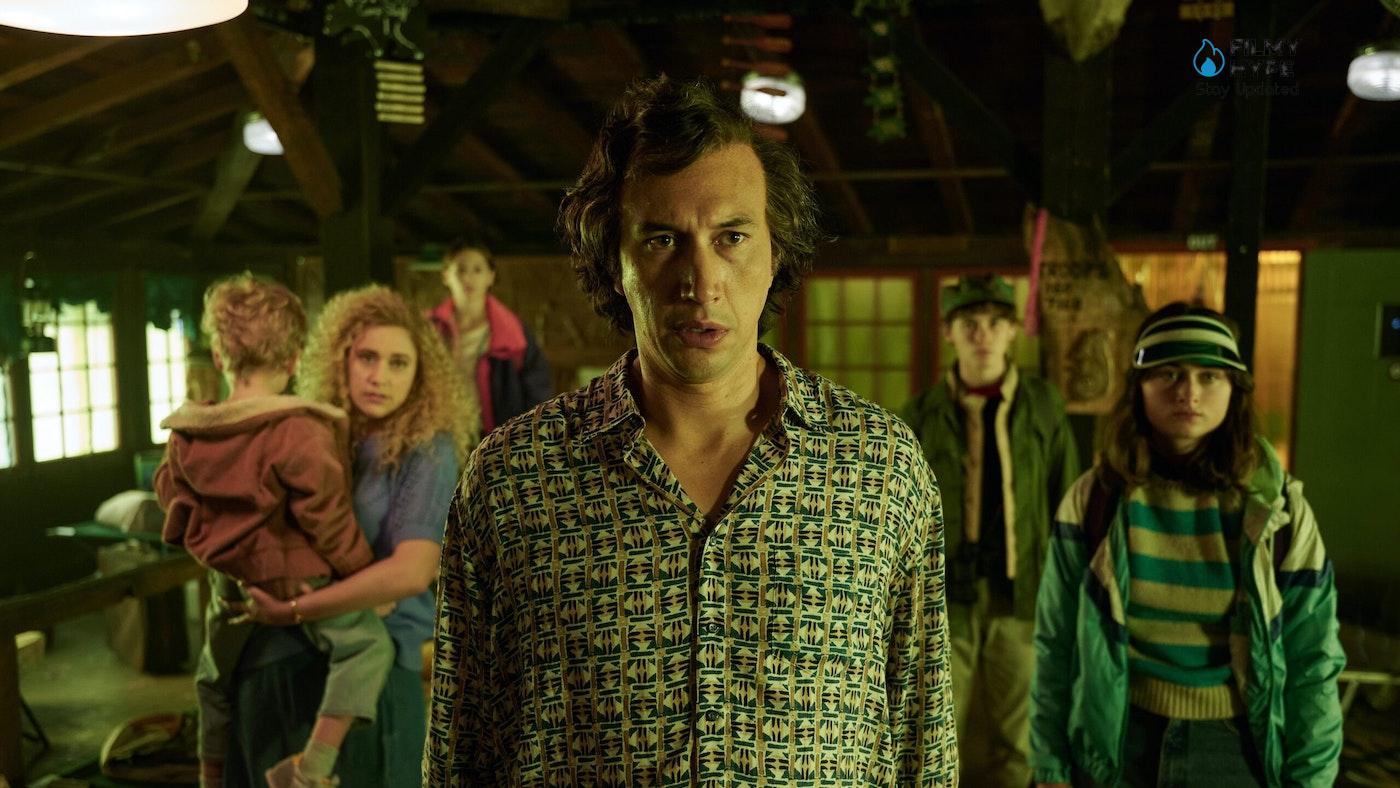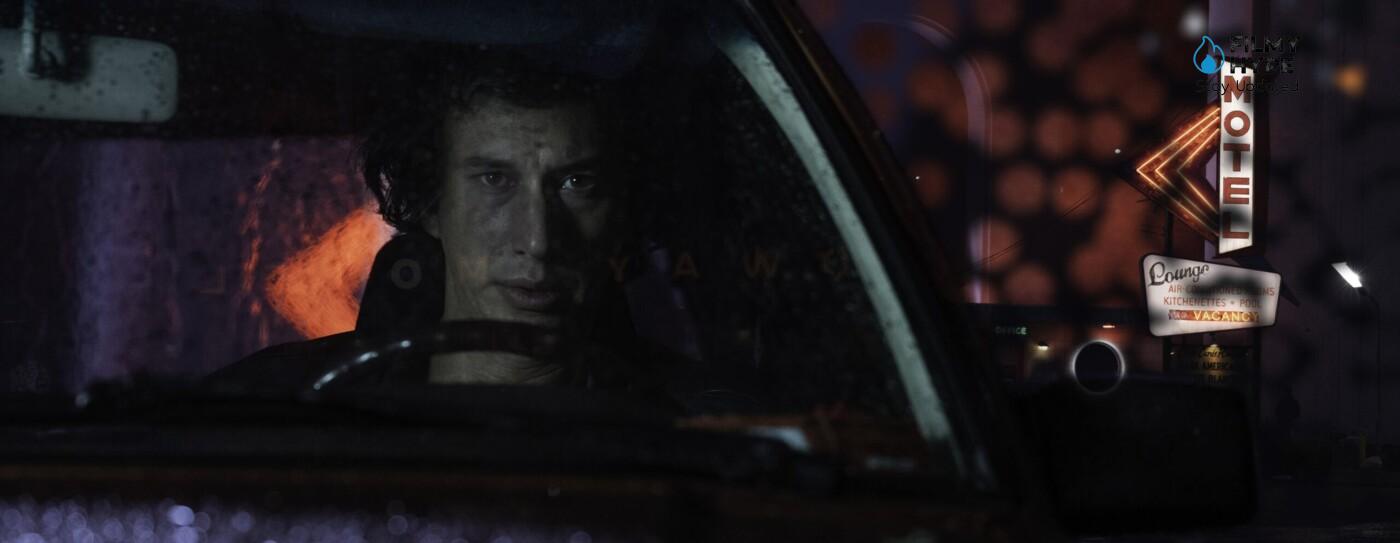White Noise Review: A Silent Adaptation, The Tale Of An Era That Still Resonates Powerfully Today | Venice 79
Stars: Adam Driver, Greta Gerwig, Raffey Cassidy
Director Noah Baumbach
Streaming Platform: Netflix (coming soon)
Filmyhype.com Ratings: 4/5 (four stars) [yasr_overall_rating size=”large”]
It is with noise that the 79th edition of the Venice Film Festival opens. With his White Noise, Noah Baumbach returns to the Lido together with his partner – on stage and in life – Greta Gerwig and Adam Driver, whom he had made shine in the previous Story of a Marriage. The film, based on the novel of the same name by Don DeLillo, asks viewers to approach the concept of white noise: a particular sound with equal power at all levels, which promotes relaxation, helping the brain to ignore the sounds that occur naturally, high intensity or unpleasant. The adaptation of Baumbach, which will be distributed by Netflix, plays with the concept of masked sound: in the last resort, it will be the natural disasters so much praised by the protagonists that will cause less fear than a family balance that is shattering. The cast of the film also includes Raffey Cassidy, Don Cheadle and Jodie Turner-Smith.

A family adventure from the 1980s that combines satire on academia, the portrayal of an environmental disaster and reflections on death, White Noise follows Jack Gladney (Adam Driver), Adolf Hitler’s senior university professor. The scholar is married to Babette (Greta Gerwig), the last of several wives, with whom he grows up his four children, some of whom are the result of the previous marriages of the two spouses. The balance of the family is shattered when, following an accident, a toxin spreads in their city, throwing the community into panic just as the family goes through an internal crisis.
White Noise Review: The Story
Death is scary. Or rather, it is the thought of this that constantly wears down the protagonists of Baumbach. Jack and Babette Gladney have found each other after a series of unfortunate marriages and lead a rather extravagant existence: the four children Denise, Arlo, Elliot and Heinrich are brothers, coming from different marriages but united on a character level. Paranoia reigns supreme in the Gladney family, does not leave even the youngest immune, but has a different effect for age: in siblings, it becomes ingenuity and curiosity, in adults it foments the terror of not leaving a mark, both from a private and a professional point of view.
There is only one way to survive death: to become an icon. “Musical” emperors, like Elvis, or politicians – according to Jack‘s point of view pioneers of Hitler‘s studies – imperishable flowers of consent, forced or not, who survive the processes of creation and disintegration. There is no accident, natural catastrophe, or conspiracy, which could undermine the substantial studies of the two professors. But teaching stops at the university; at home, it is the children who ask, to pick up the negative signs of an illness that is insinuating itself both within a family unit and in the geographical space. Jack knows everything about Hitler, but little about his children.

Babette lives in a world completely apart: the two members of the couple try in every way to find a foothold, a shortcut to avoid the intrusive thought par excellence, that of not having enough time. And it is here that Baumbach offers us greater intensity from the point of view of writing, “sister” of the wonderful Story of a Marriage: slipping into the maze of an emotional drama, of a mental circumscription that becomes extremely material, tactile, even taking on the physical form: that of a white pill, with an uncertain composition, which contains the deafening noise of shattered psychologies, those of men who profess to be great communicators, but in reality lose their vigor precisely in the effort of confessing that something is wrong.
White Noise Review and Analysis
The conspiracy thus insinuates itself in every juncture of family communication. Unlike the icons, which receive answers from the crowds, Babette has no feedback: she remains alone, cold between the sheets that eat her face, which makes Jack have nightmares, causing him to wonder what went wrong in the couple’s alchemy ( which gave way to chemistry). Jack and Babette were used to proceeding together, united by a real conceptual psychosis, which has to do with the deepest roots of American ideology, unfortunately not treated with the same claustrophobic emphasis of De Lillo’s novel., in which political paranoia becomes domestic, verbal communication gives way to technological communication, the very young begin to be more informed than adults.
If De Lillo‘s book has risen to the archetype of postmodern literature, with Rumore Bianco Baumbach appropriates an extremely stratified narrative, but adapted to his dark comedy directorial brand, The Squid and The Whale (2005), however failing to set the best moments that actually would have enjoyed biting satire. The phantom toxic aerial event is nothing compared to the real drama, it is – in fact – a white noise, which muffles something much deeper and potentially dangerous.
The catastrophe goes away as quickly as it swept over to Iron City, is a lightning-fast moment, dynamic from the directorial point of view, but it does not take on the same visual and symbolic significance that is associated with it in the novel. It is the preparation that leads to the tragic watershed event, perpetrated by an indefinite period of time in which, in the mid-1980s, the difficulties of communication began to settle within American families, the dissociation from the role to which one should cope in the name of the negative omen, loaded excessively by media communication. In the film there is a reversal of roles: it is the professors who become journalists, news, politics, and real sibyls who spend their time sensationalizing figures and ideals of the past and are unable to react and take note of the changes of the present.

It seemed impossible to bring the expressive richness of DeLillo’s pages to the screen, but Baumbach responds to the attack with the attack. In the script and the staging, White Noise does not try to bring linearity to that “sound saturation” that the writer himself defined as crucial in his work, but rather leads it to paroxysm, also involving the view with all the strength of which the cinematographic medium disposes of. “Accumulation” is the key word that distinguishes White Noise: repertoire images juxtaposed, superimposing Elvis Presley’s performances on Hitler’s speeches; conversations carried on by voices that cover each other, in which the answers are more nebulous than the questions.
A frenzy that is almost stunning, especially in a family environment where silence is hardly contemplated. Exactly like that white noise that gives the title to the film, typical of many old TVs in the absence of a signal, the stillness, if anything, intrudes as an interference in the otherwise uninterrupted lives of the protagonists, terrified by silence for its forcing them to reflect on their respective fears. . Fear of death, above all, which is established in every image and line of the film, be it the speeches in bed in which the two spouses compete as to who would suffer more if the other perished or the plane disasters that the young Gladney witnesses fascinated on TV.
White Noise Review: The Last Words
White Noise is a silent adaptation, gentle towards Baumbach‘s genre, but not so towards characters outclassed by the names of the stars who impersonate them. The difficulty of passing from one genre to another is hardly reconciled with the vastness of a stratified starting point, open to multiple interpretations and, above all, controversial. A pill that Babette certainly likes and will also do well on Netflix, a perhaps slightly subdued return of Baumbach, engulfed by overexposure to white noise.



